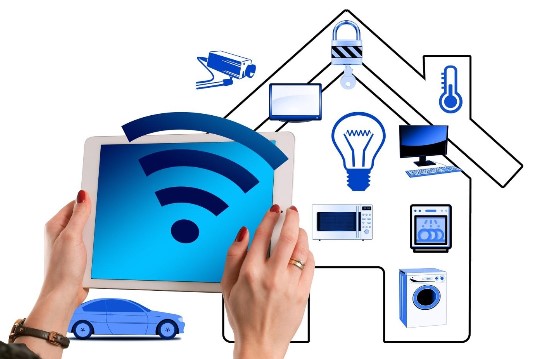
About two decades ago, an example of a smart home gadget may have only been a timer for an outdoor spotlight which would turn on at a specific time. But nowadays, the definition of a smart home has become quite different – definitely a lot more advanced. Smart homes are becoming more popular with homeowners, especially those who rely on gadgets and technology every single day. In fact, over a quarter of consumers currently have some sort of smart home appliance or gadget in their homes, and almost half of people aged between 18 and 34 years old have already adopted smart home technology. But what exactly is a smart home? How is it really defined? Here, your top questions are answered.
The definition of a smart home
The definition of a smart home is actually quite simple. A smart home is a home that is equipped with products and components which are connected to a particular network (for example, products which are connected to Bluetooth or Wi-Fi or other networks). This connection to a network allows you to control, automate, and optimise various functions in your home. These functions include the temperature, the security, the lighting, the entertainment, and the safety. If you can control, automate, or optimise these various functions with the use of a phone, a computer, a tablet, or another kind of system located within the home, then you have a smart home.
With a smart home installation, you should be able to control the different functions of your home remotely, through either a portal or a special app which you can access through your mobile phone or tablet. Devices which are smart-enabled should be able to run and operate in collaboration with other gadgets or devices in your home, and they should be able to communicate with other devices as well.
Examples of smart-enabled devices
The variety of devices which can be smart-enabled is increasingly expanding. Today, virtually all devices in any home can be smart-enabled, and this includes refrigerators, dryers and laundry machines, and even ovens. Of course, smaller components such as lighting can be enabled as well, and your heating and boiler system can also be smart-enabled, along with your home entertainment and audio system, your security and alarm system, and other electronic devices and appliances.
What a smart home needs to have
The home should have a smart feature (such as a security feature, a temperature control feature, and more) in addition to having a good connection to the Internet. To adhere to the definition of a smart home, the home must also have two other features (at a minimum) from a host of ‘smart’ features or options which include entertainment, appliances, lighting, safety detectors or gadgets, outdoor sensors, window and door sensors, and so on.
Image attributed to Pixabay.com